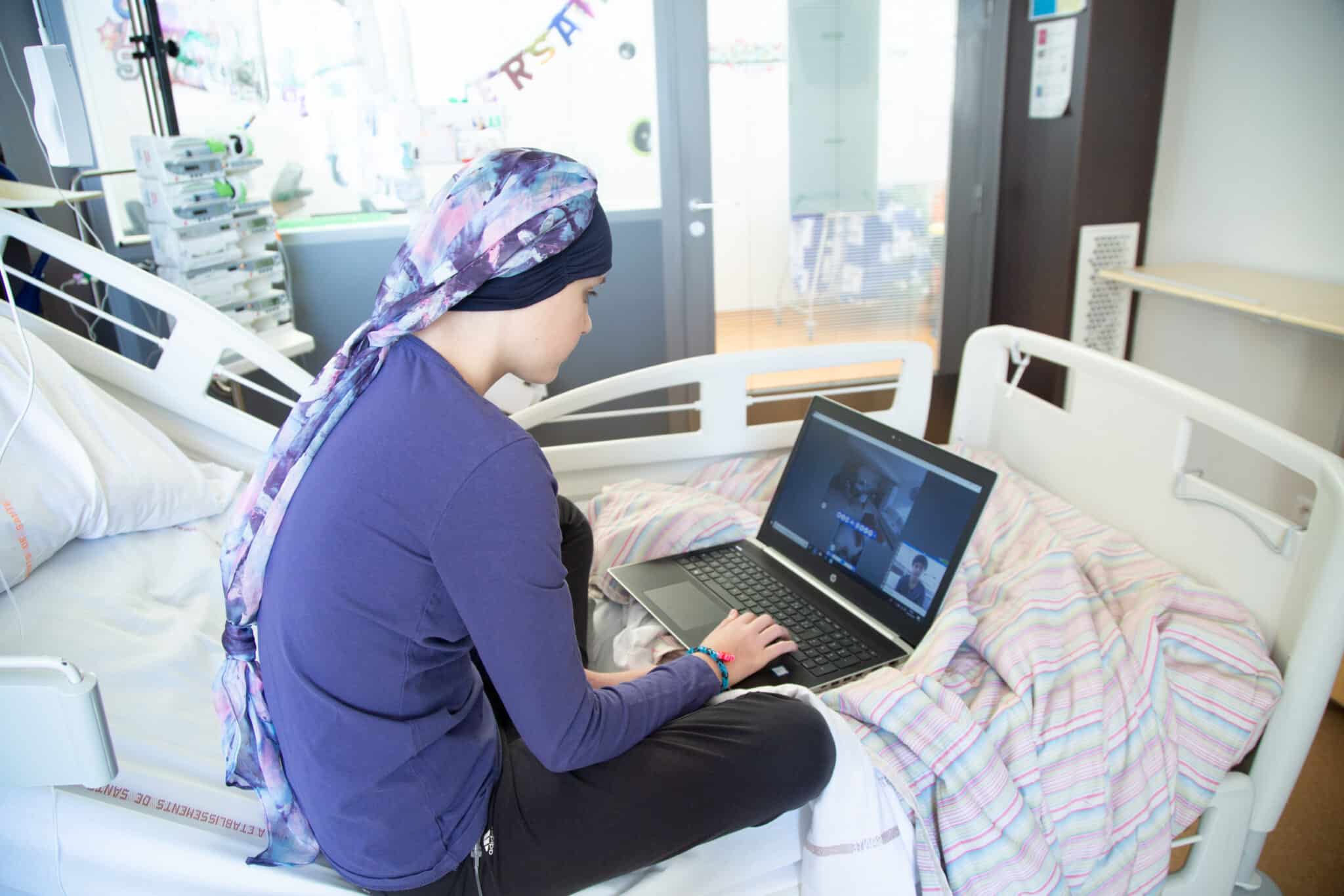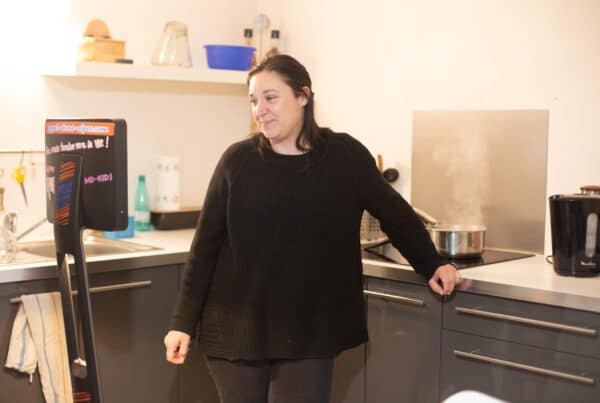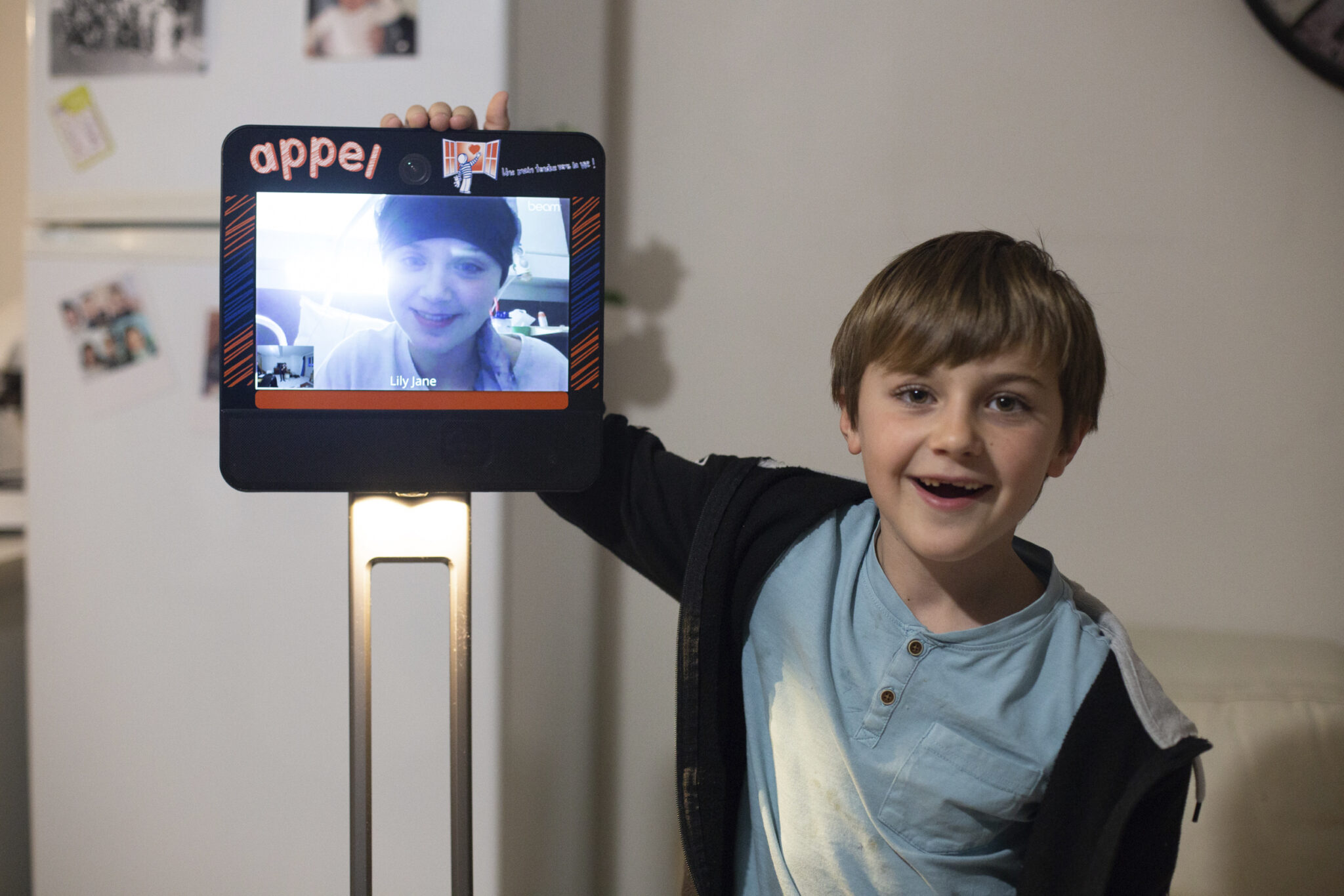Living with a somatic illness often means long-term hospitalization and loneliness. This period of isolation is particularly difficult for patients and their loved ones. In order to maintain social and family ties, some health care institutions and associations provide hospitalized patients with telepresence devices.
Telepresence in the Hospital
Equipped with cameras, microphones and multiple functionalities (zoom, screen sharing, etc.), Beam® and BeamPro® telepresence robots of the Awabot Smile device are not only the eyes, ears and voice of the hospitalized patient, but also allow him to move easily in the environment. Installed in the family home, at school or at work, these solutions allow him to be physically present despite his hospitalization and thus continue to share many moments of life with his loved ones. The separation from his family and friends is more serene because he can keep his bearings, even at a distance.
The robot can be controlled in a very intuitive way: thanks to an application installed on the patient’s computer, the latter connects to the telepresence robot and is back at home in a few clicks.
This way, the user can interact with family and friends in the kitchen, and then with siblings in the living room by moving from one room to another. How? Simply by using the arrows on his keyboard, his mouse or a joystick… a real child’s play that allows him to escape from the medical world and the white coats for a moment.

”"I can finally spend time with my sister and brother. At Christmas for example, I helped my sister to decorate the tree, remotely of course. And above all, I can spend a lot of time with my family, during meals for example, when I am not at home. So many moments of happiness that I wouldn't have had without this robot."
Thibaut, 14 years old
The VIK-e Program
A very representative example of the field of possibilities in terms of telepresence in the hospital is the Victory in Innovation for Kids – electronic project. In September 2016, the VIK-e adventure began at the IHOPe, the Institute of Hematology and Pediatric Oncology of the Léon Bérard Center in Lyon. Initiated in September 2016 and developed in conjunction with the Association Philanthropique de Parents d’Enfants Atteints de Leucémie ou autres cancers (APPEL), the Awabot company and with the support of Bristol-Myers Squibb (BMS), this program provides young hospitalized patients with telepresence robots. They offer them the possibility to maintain the link with their family during the prolonged periods of isolation in protected units.
For all parties involved, patients, families and the medical profession, the benefits are indisputable: 73% of the children and adolescents who benefit from VIK-e say that they have been able to cope better with their illness since using the telepresence robot in a family or school setting. (Study on telepresence to promote social ties in pediatrics by the Léon Bérard Center)

”"Maintaining family and friends during prolonged hospitalizations is very important. This device shows that their illness is neither a hindrance nor an obstacle to their social life in the three areas we have chosen: family, friends and school. We want to decrease the sense of marginalization they experience because of the disease."
Doctor Perrine Marec-Bérard - Pediatrician / Oncologist Léon Bérard Center Lyon
Hospitals and Associations Equipped with Telepresence Robots
For the relatives of a hospitalized person, the long months of separation often lead to a feeling of helplessness. Getting closer to an establishment or an association offering telepresence solutions can be the right way to ensure that the family bond is maintained. That is why we have listed the hospitals and associations equipped with telepresence robots:
- University Hospital Center of Lyon Sud & Liv & Lumière Association
- IHOPe – Institute of Hematology and Pediatric Oncology of the Léon Bérard Center & APPEL Association (VIK-e)
- University Hospital Center of Caen & Arche et Cassandra Associations
- University Hospital Center of Nantes & LEAF Association
- Regional University Hospital of Tour – Clocheville Pediatric Hospital & Rotary Club of Loches
- Regional University Hospital of Strasbourg & ARAME Association
- CHRU Strasbourg & Association ARAME
- FLO Association
- Coup d’Pouce Association
- University Hospital Center of Clermont Ferrand & Acte Auvergne Association
- Arche Association
- “Ligue nationale contre le cancer”
- Cassandra Association
- Imagine for Margo Association
To find out more about devices that can break the isolation of people with disabilities by staying connected to life at home, visit awabot-smile.com. You have a telepresence project to promote inclusion? Contact us!




